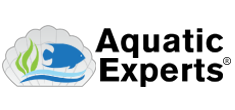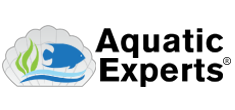Sponge filter foam is rated by the number of pores per inch of foam. The lower the PPI, the larger the holes. 20 PPI has 20 large holes in a square inch while 40 PPI has 40 smaller holes in the same area. This means the lower number of PPI won’t catch as much debris and therefore will clog slower. A sponge with a higher number of pores is great for filtering out tinier particles and polishing your water.
When using the sponge as biological media you need to keep it free from getting clogged with debris. Simply use a layer of mechanical filter in front, like our FilterFirst Premium filter pad to keep your sponge clean, allowing it to work efficiently.
In addition to our sponge being great for biological filter media, it can also be used as a mechanical filter to catch debris floating in your aquarium water. Keep your water quality high by rinsing the sponge regularly to get rid of all that trapped gunk!
The sponge can be cut to fit virtually any space in any filter. To start, mark a template on some cardboard or foam board. For this video, we’re using a canister filter and our pad needs to fit inside this tray. Once it’s traced out, cut out your template and trim it if necessary. Don’t worry about getting it perfect - you can squish the filter material a little bit to make it fit. Hold onto this template to make it quick and easy to cut new filters when you need them.
The sponges are made to last, but if they do get damaged they’re easy to replace! When the sponge gets clogged, you can gently rinse the sponge. If you’re using the sponge as biological media you must avoid using chlorinated tap water, as this will kill all the good bacteria! Rinse the sponge using dechlorinated tap water or water from the aquarium.
Your aquarium will look great and Aquatic Experts is here to help!

Aquarium Filter Sponge - SpongeFirst - Biological and Mechanical Aquarium Sponge Filter Pad for Clear Water
Your Price:
& Free Delivery in the USA

SpongeFirst foam pads complex structure easily traps particles and floating debris from aquarium and/or terrarium water producing clear water. SpongeFirst is a foam filter sponge constructed to promote water flow at the same time prevents premature clogging.


Our sponge filters are made to last a long time. The dense structure of our SpongeFirst foam pad media prevents tearing, making them easy to clean and reuse. We make our foam tight enough to hold beneficial bacteria yet open enough for waste to be easily rinsed away.

SpongeFirst foam filter pads can easily be CUT-TO-FIT MOST FILTERS including hang on the back, canister filters, wet/dry filters, sumps, pond filters, and much more. Buying in bulk WILL SAVE YOU EVEN MORE MONEY over purchasing ready-made pre-cut filter material.

Dependable Products For All Types Of Aquariums and Ponds
Join the CLUB for new videos, discount codes, and more!
Join The Club for A 15% OFF Coupon
Aquatic Experts provides simple solutions, tested products, and expert information to aid aquarium and pond hobbyists in creating exceptionally beautiful, healthy aquariums and ponds.





